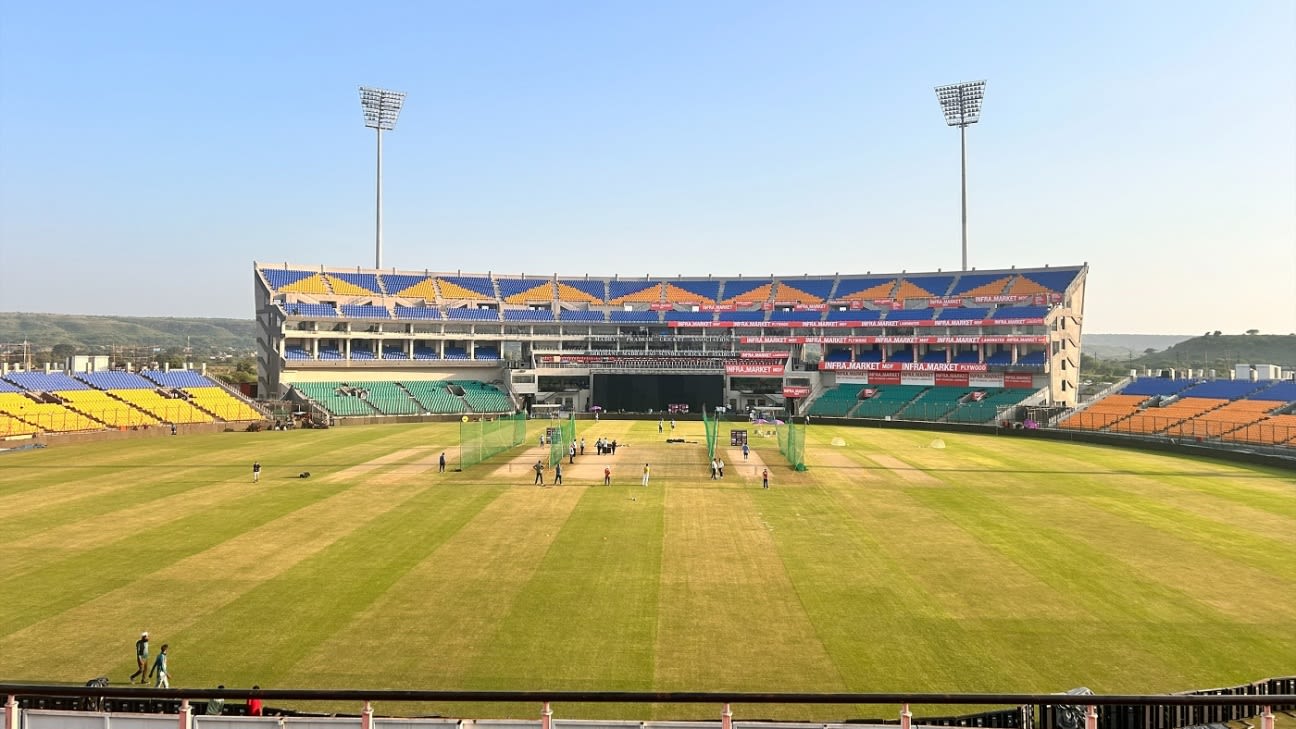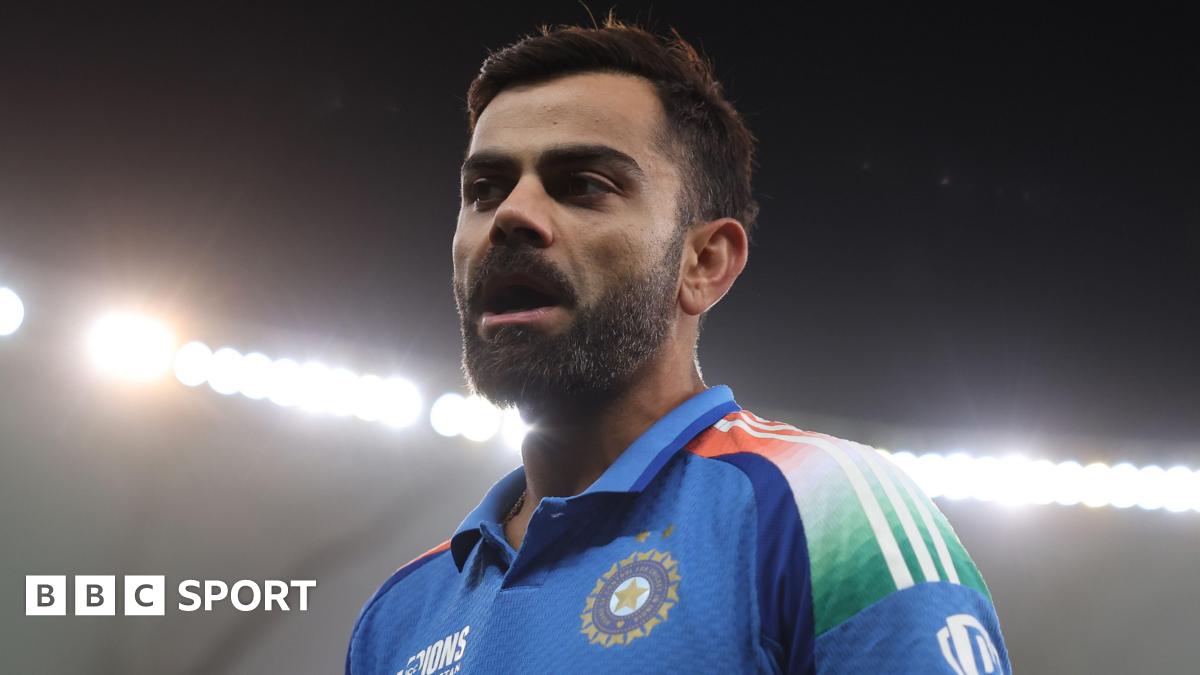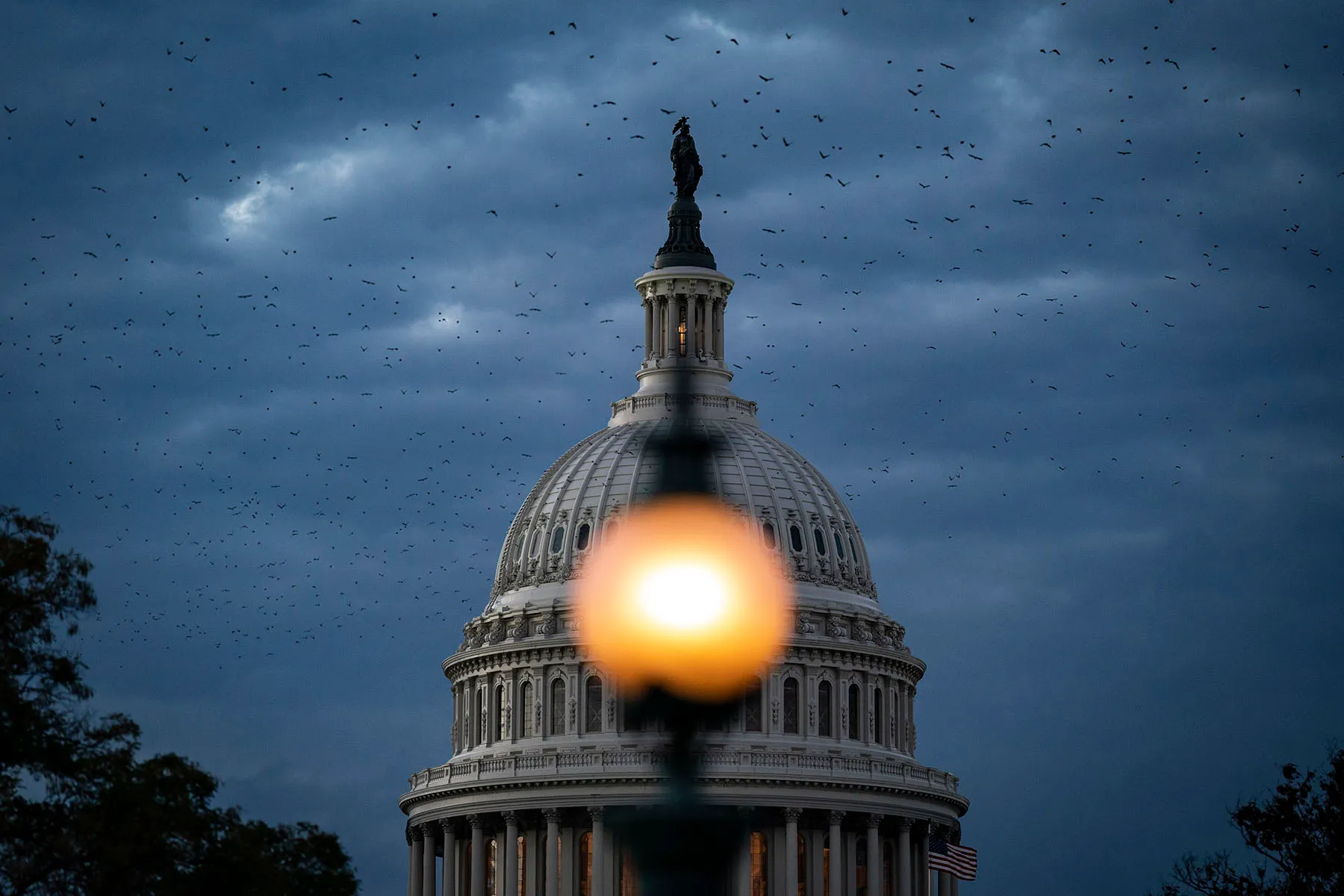International cricket returns to Gwalior after 14 years, at a brand new venue

When you arrive at the old stadium, located near the railway station in the heart of the city, it feels like you have arrived at a single-screen cinema hall in a small town. Built in the shape of a hexagon, it doesn’t look like a cricket stadium from the outside. There are no cricket-related hoardings, no floodlight towers visible from a distance.
Once inside, there is a gallery that leads you past some offices and the scorecard featuring the details of Tendulkar’s historic knock. With the exception of some VVIP seats towards the pavilion end, all the seats – the stadium has a capacity of around 20,000 – are in the form of cement steps. At both ends stand small floodlights, erected in the lead-up to the 1996 World Cup.
“We couldn’t believe we had seen something that was almost impossible in one-day cricket at that time,” Gupta says. “This match was accidentally moved from Kanpur to Gwalior 20 days earlier. Our pitch and ground were ready, but international cricket requires a lot more preparation. Our association completed these preparations in a very short time and what happened after that, the whole world knows it now.”
Gupta, who is a believer in destiny, says, “That is why it has been said that on every grain is written the name of the one who eats it. We were destined to watch the double-century of Bhagwan [God] and when he waved his helmet and bat in the air, many people, including me, had tears in their eyes. These were tears of joy.”
“At times, this stadium has come in handy for the BCCI during crises,” Gupta says. “When the first India-England ODI was cancelled in Ahmedabad due to riots in 1993, two ODIs were held on this ground on two consecutive days. This is the only ground in the India where ODI matches have been held on consecutive days.
“Apart from this, in 2010, when the preparations were not deemed to be complete in Kanpur, we were given an ODI match in a hurry. At the same time, when we did not have that much funds for the 1996 World Cup, we made smaller floodlights on three stands instead of four, so that day-night matches could be organised.”
The stadium once hosted ODIs regularly, with a match every two or three years in the 1990s and 2000s. But as the facilities became dated, this stadium, which has hosted 12 ODIs, gradually faded into the background.
The stadium belongs to the Gwalior Municipal Corporation, and was leased by the Gwalior Division Cricket Association (GDCA) for 25 years; the lease ends in 2025. So the MPCA decided to build its own stadium in Gwalior. Named after former BCCI president Madhavrao Scindia, plans for the new stadium were laid out in 2011 and it was completed in 2024 and inaugurated by BCCI secretary Jay Shah and former India captain Kapil Dev.
Located on the outskirts of Gwalior, on around 30 acres of land near the Mumbai-Agra highway bypass, surrounded by the hills of Chambal, the new stadium has all the modern frills: towering floodlights, the latest drainage system, indoor-training facilities, plush dressing rooms, a separate practice ground, nine cricket pitches, a gym equipped with new machines, a TV broadcast control room, a closed and air-conditioned media centre, and PVC seats for spectators.
But like the new stadium in Mullanpur in Punjab, the stadium is still open, with canopies for the stands to be installed only later. At present, the capacity is 30,000, with an increase to 50,000 planned by the MPCA. This is why there are exposed pillars on both sides of the square boundary – to allow for another round of construction later on.
India vs Bangladesh will be the first top-level match at this stadium – not a single domestic match has been held here yet. In June this year, however, the Madhya Pradesh Premier League was held here and, in a total of 12 matches, a lot of runs were scored.
How many runs are scored on Sunday remain to be seen, but off the field security will be tight. Prohibitory orders – aka Section 163 – have been imposed in the city, which means that more than five people cannot gather and hold any demonstration. The orders were passed after right-wing organisations called for a boycott of this match in the wake of media reports of violence on Hindus in Bangladesh. There had been similar calls for a boycott of the Kanpur Test.
The effects of these developments are visible in the preparations for the match. The road to the stadium, which is located around 8km from the city, has already been blocked by a barricade at about the 4km mark, with only those working inside the stadium and the media allowed access to the stadium. Section 163 will remain in place even after the end of the match, until October 7, when both teams leave for Delhi for the second match of the series.
For now, though, Gupta is happy that the cricket is back, after a 14-year “exile” from his city. He is ready to score another historic match in the annals of Gwalior cricket.
दया सागर ESPNcricinfo हिंदी में सब एडिटर हैं।dayasagar95
Related
Cooper Connolly: Angry fans single out cricket star with savage…
Cooper Connolly called out by cricket supportersFailed with the bat in semi-final defeat versus IndiaYoungster was used as a makeshift opener in Du
Champions Trophy: Australian cricket’s public enemy No.1 has the last…
Australia 's Champions Trophy title hopes are over after arch nemesis Virat Kohli guided India to a four-wicket win in their blockbuster semi-final showdo
Champions Trophy 2025: India’s Virat Kohli ‘best ODI chaser’, says…
Kohli has an uncanny ability to take the pressure of the game on to his shoulders and accumulate runs."This game is all about pressure, especially big games lik












